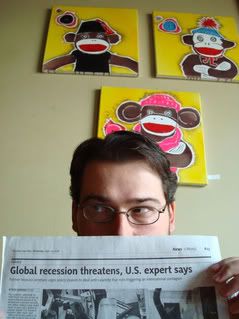Caravaggio used early camera to capture his stunning images.

Michelangelo Merisi da Caravaggio, "Judith Beheading Holofernes" (1598)
The Renaissance artist Caravaggio may have used an early form of photography, 200 years prior to the invention of the camera, in order to first capture his ultra-realistic scenes. Employing a variation of the camera obscura, first suggested by Leonardo da Vinci, Caravaggio used a light sensitive chemical that captured an image projected onto it through a series of lenses.
Caravaggio worked in a 'darkroom' and illuminated his models through a hole in the ceiling, said Lapucci, who teaches at the prestigious Studio Art Centres International in the Tuscan capital.Ironically, like the nervous system deterioration that has been proposed to explain Vincent Van Gogh's eccentric behavior, Caravaggio may have suffered the same unanticipated consequences.
The image was then projected onto a canvas using a lens and a mirror, she said.
Caravaggio 'fixed' the image, using light-sensitive substances, for around half an hour – during which he used white lead mixed with chemicals and minerals that were visible in the dark to paint the image with broad strokes, Lapucci said.
One of the main elements of these mixtures was mercury – to which prolonged exposure can affect the central nervous system causing irritability and other symptoms – which Lapucci said would help explain Caravaggio's notorious temper.


















No comments:
Post a Comment